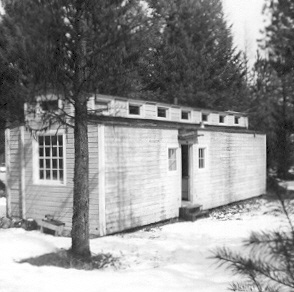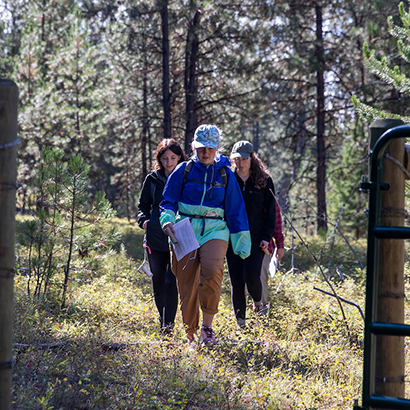History
The University of Montana acknowledges that we are in the aboriginal territories of the Salish and Kalispel people. We honor the path they have always shown us in caring for this place for the generations to come.
In 1864, the Northern Pacific Railroad took over much of Lubrecht as part of a large government land grant. In the 1890s, the Anaconda Copper Company purchased some of the Northern Pacific holdings as a timber source for their Butte mines. In 1927, T.C. Spaulding, Dean of the School of Forestry at the University of Montana, began negotiations to obtain land in the Blackfoot as a site for an experimental forest. He worked with then president of the university, Charles H. Clapp, although Clapp noted that the university was not in a position to buy the land and therefore it must be a gift.

In 1937, the Montana Legislature approved the Montana Forest and Conservation Experiment Station, which allowed the School of Forestry to "accept land or other donations as may be made to the state for the purposes of this act." When Dean Spaulding completed his negotiations with the Anaconda Company for the gift of Lubrecht, the school was able to accept it through the MFCES.
On Dec. 24, 1937, the Anaconda Copper Mining Company donated 19,058 acres to the Montana Forest and Conservation Experiment Station. Two years later the Northern Pacific donated an additional 1,210 acres. Over the years smaller tracts have been obtained from private individuals to bring the total acreage to its present figure. The forest was named for W.C. Lubrecht, who was the general manager of the Anaconda Company lumber operations at Bonner. According to newspaper reports at the time, the gift provided the school with "the most extensive holdings of any such school in the United States and compares favorably with the largest of such areas in the world.” A plaque of appreciation was given to Anaconda in 1960, both for the initial gift and the subsequent donation of 12 buildings (the railroad cars) from their Bear Creek logging camp. The railroad cars were quickly incorporated as dorm space to make that possible. The initial buildings at Lubrecht had been constructed from wood cut and sawed by the students from the property. Anaconda returned the plaque for permanent installation in the Lubrecht headquarters building (now the Castles Center).
For almost forty years, the camp at Lubrecht consisted of a collection of old buildings and temporary facilities. In 1982, the Castles Forestry Center was built to provide a permanent space for research. A grant from the Murdoch Foundation and private donors funded this office/classroom/laboratory space. Many of the recreation facilities were constructed by students in the 1950s using lumber sawn on site. In 1996, the 32-bed lodge and one-bedroom apartments were added.
The forest has been actively managed over the years, with some commercial thinning done particularly for the mountain pine beetle in the 1970s and 80s. It is still possible to recognize remnants of the three earlier Anaconda Company cuts of the late 1800s, 1916, and 1925 to 1926 and associated railroad grades as well as two clearcut areas from the 1960s. Small amounts of timber are offered for sale annually, with the proceeds going to support further projects on the forest, as well as the maintenance and management of Lubrecht.
